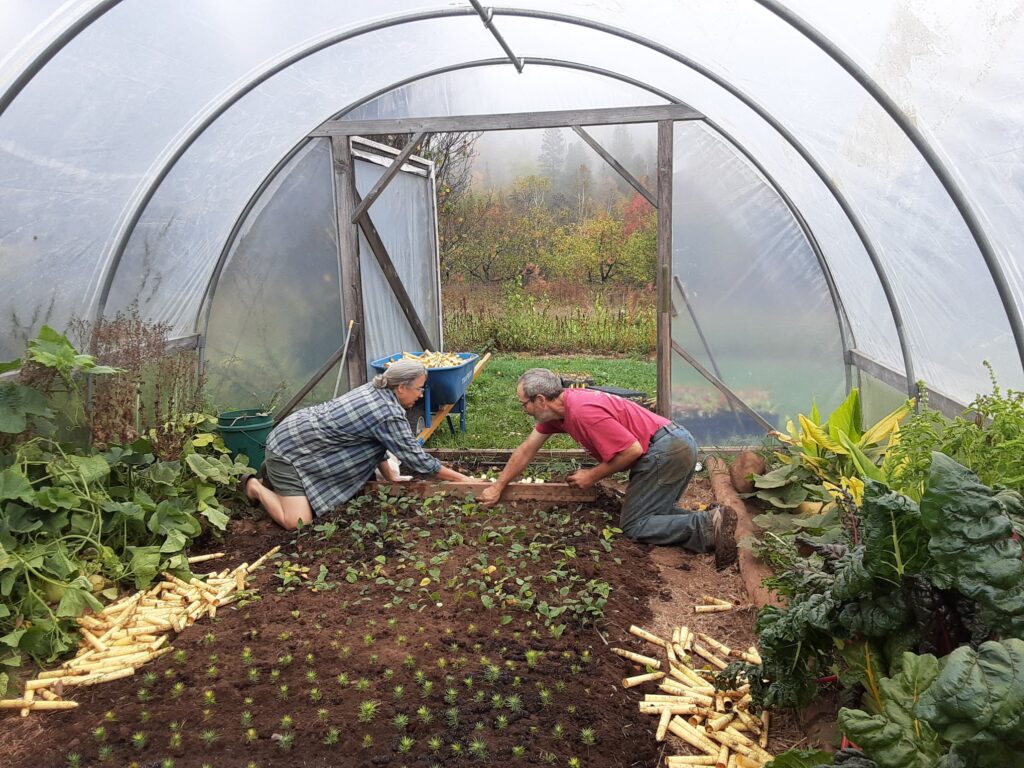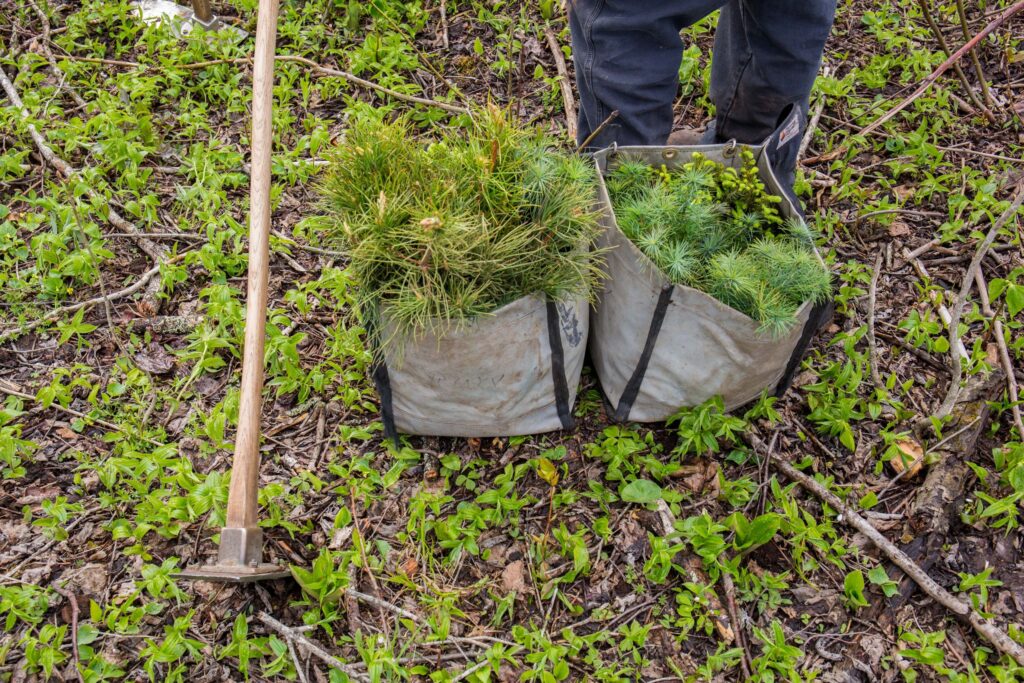Helping white pine and birch trees migrate north? Biologists have a plan to support Minnesota’s northwoods with species that will survive a warming climate.

A project underway in northeastern Minnesota is seeking to help the forest transition to different conditions as the climate changes. Scientists with the University of Minnesota-Duluth, The Nature Conservancy, and other groups are developing seed sources of native tree species that have proven resilient in the face of global warming.
The St. Cloud Times recently reported on the project as part of work funded by a journalism grant from the Knight Foundation. Reporter Nora G. Hertel profiled the work of Dr. Julie Etterson, head of the biology department at the University of Minnesota-Duluth, and her lab and collaborators.
“My goal is to retain healthy forests. And I’m a biologist, so I tend to think about the value of those forests from the perspective of ecosystem services, clean water, shade, carbon sequestration, habitat for other organisms,” Etterson told the paper. “And of course, the enjoyment of the people who are up and down the North Shore all summer long. That’s what really motivates me.”
The team is helping trees from southern Minnesota, primarily white pine, yellow birch, and red oak, migrate to the northeastern corner of the state. All the species are currently found in both regions, but are expected to suffer in the south due to climate change. They could not only survive in a changed northern climate, but also replace other species that will be pushed northward by global warming.
While they are the same species as the native forests, they carry genetics better suited to warmer climates. It’s a change from the usual practice of planting from local seed sources, meant to introduce tougher DNA into the forest. But it’s a response to the fact that Minnesota has already experienced a 3.6 degree increase in average annual temperature in the past 120 years, with more to come.
Resilient reforestation
The project is based on findings from a recent effort called the Conifer Stronghold initiative. Led by The Nature Conservancy, land managers planted more than 100,000 pines in northern Minnesota in areas identified as likely to stay cool in future climate. They used seedlings from nearby sources and from southern areas, and then monitored their growth. The researchers found that the southern sources provided trees that grew better than the local varieties.
“A tree can only sequester carbon if it survives,” Etterson said. “And right now, the boreal constituents of the North Shore forests are not surviving.”
This week, world leaders are meeting in Glasgow, Scotland to discuss slowing and mitigating climate change. Yesterday, more than 100 nations including the United States and Canada signed a Declaration on Land Use and Forests. The statement calls for the countries to work together “to halt and reverse forest loss and land degradation by 2030.” “We urge all leaders to join forces in a sustainable land use transition,” the declaration concludes. “This is essential to meeting the Paris Agreement goals, including reducing vulnerability to the impacts of climate change and holding the increase in the global average temperature to well below 2°C and pursuing efforts to limit it to 1.5°C, noting that the science shows further acceleration of efforts is needed if we are to collectively keep 1.5°C within reach.”
Amid a push to plant more trees to keep carbon out of the atmosphere, the team believes they can help ensure reforestation efforts can succeed in the long term, by planting trees that will be able to weather a changing world. But that takes a carefully coordinated effort, from collecting seeds, growing seedlings, and buying and planting them.
In a partnership with the Minnesota Sustainable Farmers Association, the university is collecting seeds and acorns from southern Minnesota, and other growers are planting them. Groups ranging from watershed districts to The Nature Conservancy are buying them to sow around the region.

Solving seed supplies
This year was the first year of seedling production in the project. The group was hoping their 15 farms would grow about 85,000 seedlings, and turn a profit, but they encountered several challenges, including the historic drought. Organizers say they now hope about 50,000 seedlings will be available next spring, and they acknowledge the farmers may not make money on it as soon as they hoped.
This effort is happening as seedling supply issues are creating problems with planting. Driven by wildfires and new planting initiatives, one of the biggest obstacles to reforestation is just finding enough young trees.
The Nature Conservancy’s Meredith Cornett explained the challenges of meeting Minnesota’s planting potential in a blog post earlier this year. To meet a rough goal of reforesting 1 million acres in the state by 2040, planters will need some 780 million seedlings, or 43.3 million seedlings per year.
“Current annual seedling production in Minnesota is roughly 6.1 million across both public and private nurseries,” Cornett wrote. “Reaching our goal of one million acres would require roughly eight times the level of current production. Ambitious, but not impossible.”
Cornett also described how state-owned nurseries can right now produce about 25 percent of the needed seedlings. She says full funding would increase the capacity, but the reforestation effort will still depend on private nurseries and growers and coalitions to accomplish.
Video:

More information
- How Minnesotans are helping trees in the north woods adapt to climate change – St. Cloud Times
- Glasgow Leaders’ Declaration on Forests and Land Use – U.N. Climate Change Conference 2021
- Can We Grow Enough Trees to Reforest Minnesota? – The Nature Conservancy
- Climate-smart trees take root in northeast Minnesota – University of Minnesota Extension
- Reestablishing a thriving Northwoods through assisted migration – UMN Institute on the Environment

